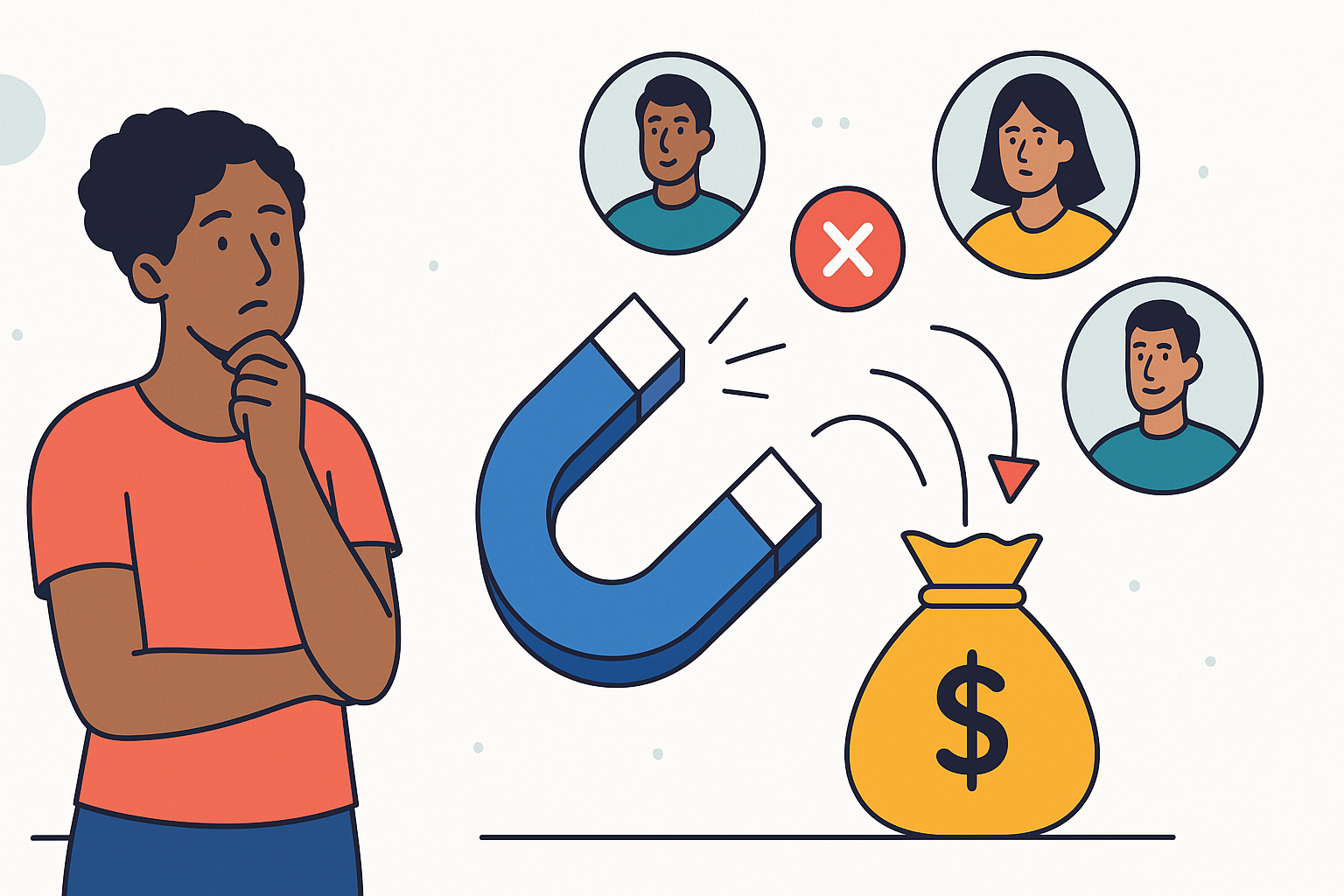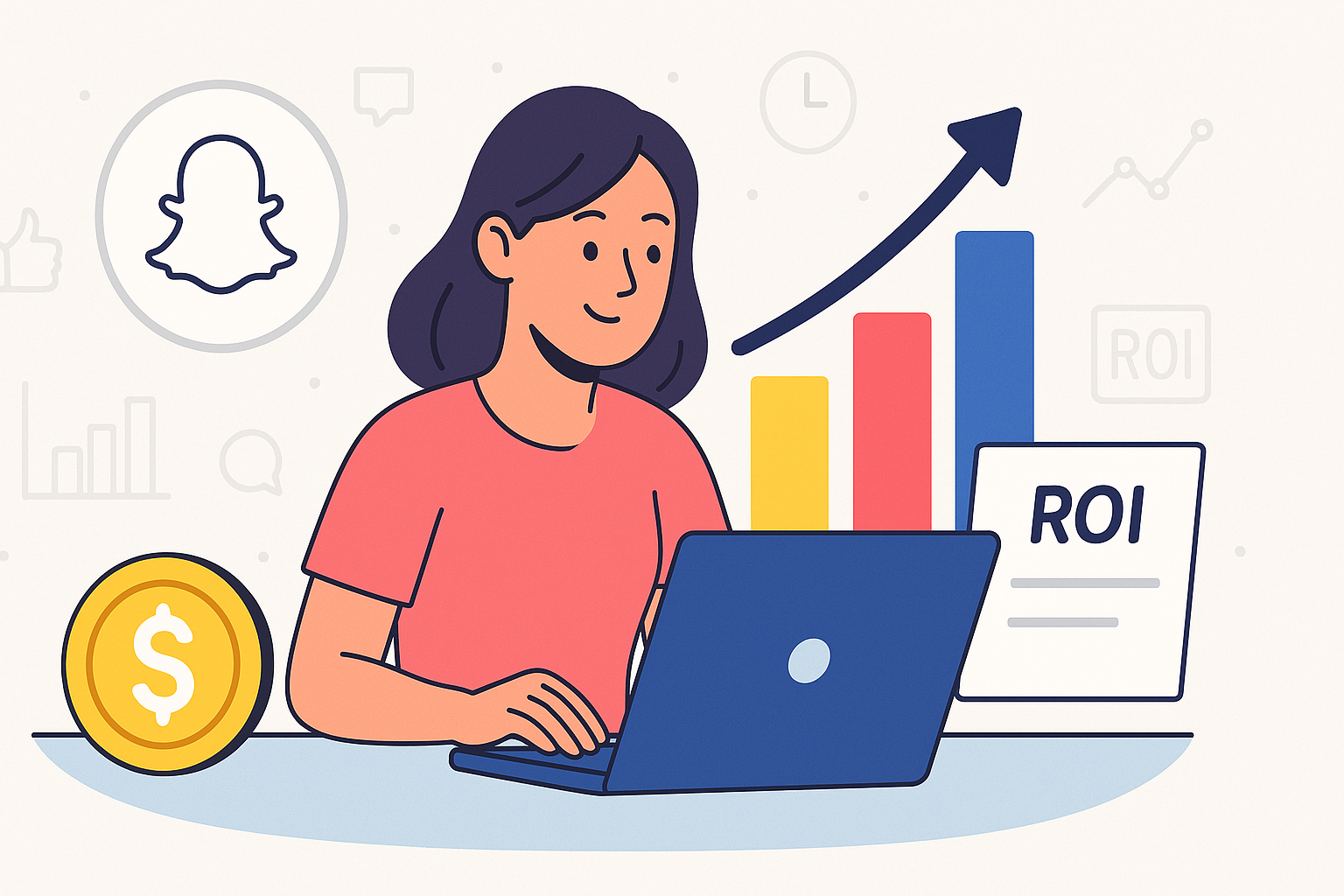Proven Digital Marketing Examples to Inspire Your Next Campaign
by Francisco Kraefft on 29 Jan, 2025
Understanding the theory behind digital marketing is essential, but witnessing real-world applications brings strategies to life. Seeing how others have succeeded provides a powerful blueprint for your own growth. This exploration isn't just about admiring success stories; it's about dissecting the why and how behind impactful digital marketing examples. We'll move beyond generic advice and delve into specific instances across various channels – from search engine optimization and paid advertising to social media engagement and email nurturing. Prepare to gather actionable insights and inspiration from campaigns that delivered measurable results. By analyzing these proven approaches, you can identify opportunities, refine your tactics, and ultimately, drive more meaningful outcomes for your business. Let's examine what truly works.
Mastering Search Visibility: SEO & Content Marketing Examples
Search Engine Optimization (SEO) and Content Marketing are foundational pillars for sustainable online visibility. Success here isn't accidental; it's the result of strategic planning, high-quality content creation, and persistent optimization. Let's look at some powerful examples:
-
Example: The Skyscraper Technique Perfected Imagine identifying top-ranking content for a valuable keyword in your industry. You notice it's good, but perhaps outdated, lacking depth, or missing key visuals. The Skyscraper Technique, popularized by Brian Dean of Backlinko, involves creating content that is significantly better – more comprehensive, up-to-date, better designed – and then reaching out to sites linking to the original inferior piece, suggesting they link to your superior resource instead.
- Why it works: This strategy directly targets link equity from established sources by offering demonstrably superior value. It combines in-depth content creation with strategic outreach, addressing both user needs and search engine ranking factors.
-
Example: HubSpot's Content Ecosystem HubSpot didn't just create a blog; they built an expansive resource library. They offer free tools (like the Website Grader), comprehensive guides, templates, webinars, and in-depth articles covering nearly every facet of marketing, sales, and customer service.
- Why it works: By providing immense value before asking for anything in return, HubSpot establishes authority and trust. Their content attracts a massive audience, generates qualified leads through gated content and tool sign-ups, and naturally earns backlinks. They effectively become the go-to resource, dominating search results for countless industry terms. You can apply this by identifying your audience's core challenges and building valuable resources around them.
-
Example: Local SEO Dominance for Service Businesses Consider a local plumbing company. Their success hinges on appearing prominently when someone searches "plumber near me" or "emergency plumbing [city]". Effective local SEO involves:
- Optimizing their Google Business Profile (GBP) with accurate information, photos, service listings, and consistent NAP (Name, Address, Phone Number).
- Actively encouraging and responding to customer reviews on GBP and other relevant directories.
- Building local citations (listings in online directories like Yelp, Yellow Pages).
- Creating location-specific service pages on their website (e.g., "Plumbing Services in [Neighborhood]").
- Why it works: Local SEO directly targets users with high purchase intent in a specific geographic area. It leverages platform-specific features (like GBP) and focuses on signals (reviews, citations) that Google uses to rank local businesses. It’s a prime example of targeting a niche audience effectively.
Precision Targeting: Winning PPC & SEM Campaign Examples
Paid Search (PPC) and Search Engine Marketing (SEM) offer immediacy and control, allowing you to reach specific audiences actively searching for your solutions. Effective campaigns, however, go beyond simply bidding on keywords. They require precision, compelling messaging, and continuous optimization.
-
Example: High-Intent Keywords for SaaS Lead Generation A SaaS company offering project management software could target keywords like "best project management software for small teams" or "Asana alternative". Their Google Ads campaigns would lead to dedicated landing pages highlighting features relevant to that specific search query (e.g., collaboration tools for the 'small teams' keyword).
- Key elements: Negative keywords (e.g., -free, -jobs) are crucial to avoid irrelevant clicks. Ad copy emphasizes benefits over features (e.g., "Streamline Projects & Boost Productivity" vs. "Task Assignment Feature"). Landing pages are laser-focused on conversion, offering a free trial or demo request.
- Why it works: This approach captures users at the bottom of the funnel who demonstrate clear purchase intent. The alignment between keyword, ad copy, and landing page maximizes relevance and conversion rates. As an agency, we often see significant ROI improvements just by refining keyword targeting and landing page congruence.
-
Example: E-commerce Dynamic Retargeting An online clothing retailer uses Facebook and Instagram Ads to retarget users who viewed specific products or added items to their cart but didn't complete the purchase. They utilize Dynamic Product Ads, which automatically show the exact products the user previously interacted with.
- Enhancements: The ads might include a limited-time discount ("Complete your purchase now for 10% off!") or highlight related items. Frequency capping prevents ad fatigue.
- Why it works: Retargeting reminds potential customers about products they showed interest in, bringing them back to the site. Dynamic ads personalize the experience, making it highly relevant. It's an effective way to recover potentially lost sales by re-engaging warm leads.
-
Example: LinkedIn Ads for B2B High-Value Leads A cybersecurity firm wants to reach CISOs and IT Directors in the financial services industry. They use LinkedIn Ads to promote a comprehensive whitepaper on "The State of Financial Services Cybersecurity in [Year]".
- Targeting: They leverage LinkedIn's powerful demographic targeting, filtering by job title, industry, company size, and seniority.
- Offer: The high-value whitepaper acts as a lead magnet, requiring users to submit their contact information for access.
- Why it works: LinkedIn provides unparalleled access to specific professional audiences. Offering valuable, gated content positions the firm as a thought leader and generates highly qualified leads genuinely interested in their expertise (Learn more about LinkedIn Ads). This precision targeting justifies the potentially higher cost-per-click on LinkedIn compared to other platforms.
Building Communities & Buzz: Social Media Marketing Examples
Social media marketing extends far beyond paid ads. It's about building communities, fostering engagement, creating brand personality, and sometimes, even going viral. Successful social media requires understanding the nuances of each platform and authentically connecting with your audience.
-
Example: Wendy's Bold & Engaging Twitter Presence Wendy's Twitter account is legendary for its sassy, humorous, and highly interactive approach. They engage in witty banter with users and other brands, respond rapidly to mentions, and aren't afraid to embrace internet culture and memes.
- Why it works: They established a unique and consistent brand voice that resonates with their audience. Instead of just broadcasting marketing messages, they participate in conversations, making the brand feel more human and approachable. This high level of engagement builds a loyal following and generates significant organic reach and media attention.
-
Example: GoPro's User-Generated Content (UGC) Strategy GoPro cameras are designed to capture exciting moments. The brand masterfully leverages this by encouraging users to submit their best photos and videos using GoPro products. They then feature the best UGC across their social media channels (crediting the creator).
- Benefits: This provides GoPro with a constant stream of authentic, high-quality content at minimal cost. It showcases the product in diverse, real-world scenarios far more effectively than staged corporate shots. It also builds a strong community around the brand, as users are eager to be featured.
- Why it works: UGC builds social proof and trust. People are more likely to believe and engage with content created by peers than by the brand itself. It fosters a sense of belonging and turns customers into brand advocates.
-
Example: Glossier's Community-Driven Product Development Beauty brand Glossier heavily involves its community in product development and feedback. They use platforms like Instagram to ask followers what they want, showcase behind-the-scenes content, and feature real customers using their products.
- Approach: They treat their social media followers less like an audience and more like co-creators and insiders.
- Why it works: This fosters immense brand loyalty and advocacy. Customers feel heard and invested in the brand's success. It also ensures that product development is closely aligned with customer desires, increasing the likelihood of product success. Their Instagram feed feels more like a conversation than an advertisement, driving engagement and organic growth.
Nurturing Relationships: Effective Email Marketing Examples
Email marketing remains one of the highest ROI digital marketing channels when executed thoughtfully. It's your direct line to interested prospects and loyal customers. Generic email blasts rarely cut it; success lies in personalization, segmentation, and delivering genuine value.
-
Example: Grammarly's Personalized Usage Reports Grammarly sends weekly emails to its users summarizing their writing activity, common mistakes, vocabulary usage, and productivity compared to other users.
- Why it works: These emails are highly personalized and data-driven, providing genuine value and insights to the user. They subtly reinforce the product's benefits and encourage continued usage without being overtly promotional. It's a perfect example of using email to build habit and demonstrate ongoing value.
-
Example: E-commerce Welcome Email Sequences When you sign up for an email list from a compelling online store, you often receive a series of automated emails. A strong welcome sequence might look like this:
- Email 1 (Immediate): Welcome message, brief brand story, maybe a small discount code.
- Email 2 (Day 2): Highlights best-selling product categories or introduces key brand values (e.g., sustainability).
- Email 3 (Day 4): Social proof – customer testimonials, user-generated content, or press mentions.
- Email 4 (Day 7): Reminder of the discount code (if offered) or introduction to loyalty program.
- Why it works: This sequence onboards new subscribers gradually, builds rapport, establishes expectations, and guides them towards making a purchase without being overwhelming. Automation ensures consistency and timeliness.
-
Example: Thought Leadership Newsletters (B2B) Many consulting firms or B2B service providers send out weekly or monthly newsletters that curate relevant industry news, offer exclusive analysis, share practical tips, or provide summaries of recent research.
- Key aspect: The primary focus is on providing value and insights, not direct selling. Sales messaging, if included, is subtle and secondary.
- Why it works: Positions the sender as a trusted authority and thought leader in their field. It keeps the brand top-of-mind and nurtures leads over the long term, building credibility so that when the prospect is ready to buy, the sender is the obvious choice. This aligns perfectly with a data-driven approach, as engagement metrics (open rates, click-through rates) can inform future content.
-
Example: Sophisticated Abandoned Cart Recovery Beyond a simple reminder, effective abandoned cart emails often employ segmentation and tailored offers. For instance:
- A user abandoning a high-value item might receive a slightly better discount or free shipping offer than someone abandoning a low-value item.
- Emails might feature urgency triggers ("Limited stock available!") or social proof ("See what others are saying about this item").
- Why it works: Personalization and strategic incentives significantly increase the chances of recovering the sale. It addresses potential barriers (like shipping costs) and leverages psychological triggers (like scarcity).
The Power of Proof: Data-Driven Marketing & Analytics Examples
Ultimately, the most successful digital marketing strategies are those informed by data. Gut feelings have their place, but measurable results and analytical insights provide the roadmap for optimization and growth. At iVirtual, a data-driven approach is core to how we operate. Let's see how analytics translates into tangible results.
-
Example: A/B Testing Landing Page Headlines A company is driving traffic to a landing page offering a free ebook, but the conversion rate (people signing up) is lower than desired. They hypothesize the headline isn't compelling enough.
- The Test: They run an A/B test using marketing software. 50% of visitors see the original headline (Version A: "Download Our Free Marketing Ebook"), and 50% see a benefit-driven alternative (Version B: "Double Your Leads with Our Free Marketing Ebook").
- The Result: After collecting statistically significant data, they find Version B has a 35% higher conversion rate.
- Why it works: A/B testing provides empirical evidence of what resonates best with the audience. Instead of guessing, the company makes a data-backed decision that directly improves performance. Continuous testing (on buttons, images, copy, layout) leads to incremental gains that compound over time.
-
Example: Using Google Analytics for Content Strategy A business regularly publishes blog posts. By analyzing Google Analytics data, they identify that:
- Posts about "social media marketing trends" consistently attract the most organic traffic and have high engagement (time on page).
- Posts about "traditional advertising methods" have low traffic and high bounce rates.
- A significant portion of traffic converting on their contact form first visited a specific case study page.
- Strategic Pivot: They decide to allocate more resources to creating in-depth content around social media trends and related topics. They also work on optimizing and promoting their high-converting case studies more prominently.
- Why it works: Analytics reveals what content actually performs well in terms of attracting and engaging the target audience, and which content contributes to business goals (like lead generation). This allows for smarter resource allocation and a content strategy focused on ROI. Learn more about how Google Analytics works.
-
Example: Optimizing the Conversion Funnel An e-commerce store notices a high drop-off rate during the checkout process using funnel visualization reports in Google Analytics. They see many users leave on the shipping information page.
- Investigation & Action: They hypothesize the shipping costs are too high or presented too late. They test offering free shipping above a certain order value and displaying estimated shipping costs earlier in the cart.
- Outcome: The checkout completion rate improves significantly.
- Why it works: Data analysis pinpoints specific friction points in the customer journey. By understanding where users are dropping off, businesses can investigate the why and implement targeted solutions to improve the user experience and conversion rates.
-
Example: Cross-Channel Budget Reallocation (iVirtual Approach) For a client running campaigns across Google Ads, Facebook Ads, and LinkedIn Ads, we meticulously track conversions and cost-per-acquisition (CPA) for each channel. Our analysis reveals that while LinkedIn Ads generate leads, the CPA is 3x higher than Google Ads, which drives the bulk of high-quality conversions. Facebook Ads show moderate volume but lower lead quality.
- Our Recommendation: We advise shifting a portion of the LinkedIn budget towards scaling the successful Google Ads campaigns and refining targeting on Facebook to improve lead quality.
- *Result: The client sees a 20% decrease in overall CPA and a 15% increase in qualified leads within one quarter.
- Why it works: Data-driven attribution and performance analysis allow for intelligent budget allocation, maximizing ROI by investing more in what demonstrably works best for the client's specific goals.
Conclusion
The digital marketing examples we've explored highlight a crucial theme: success is rarely about discovering a single secret tactic. Instead, it emerges from a deep understanding of your audience, strategic channel selection, compelling execution, and, critically, a commitment to measurement and iteration. Whether it's the targeted precision of PPC, the community building of social media, the relationship nurturing of email, or the foundational visibility from SEO, each channel offers unique opportunities. By learning from these diverse examples and embracing a data-driven mindset, you position your business to not just compete, but to lead and achieve sustainable growth.
Ready to implement proven strategies and see measurable results for your business? Let iVirtual's data-driven experts craft your next successful digital marketing campaign. Contact us today!


